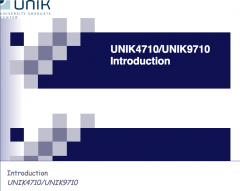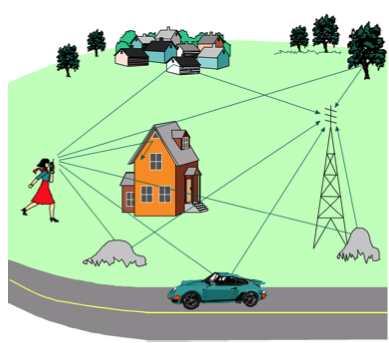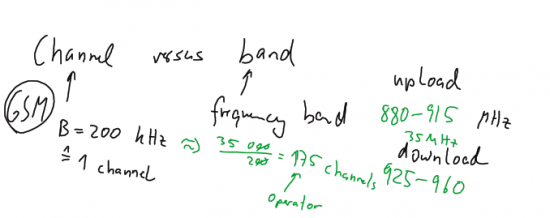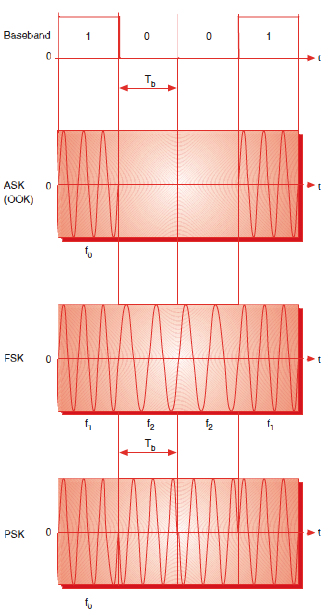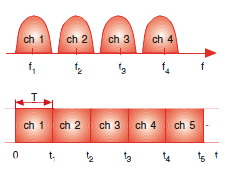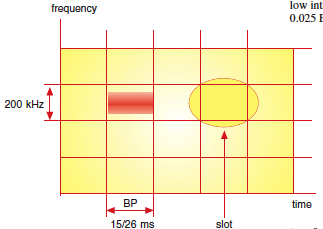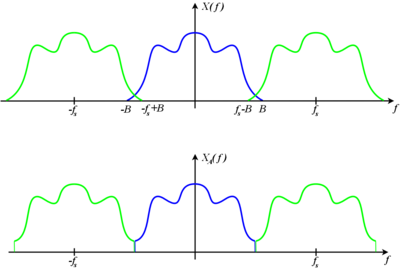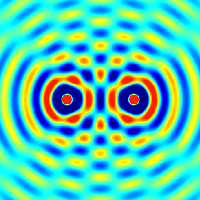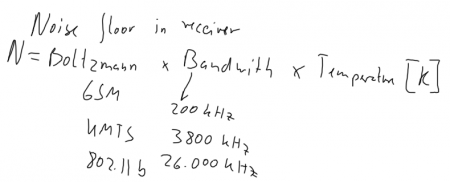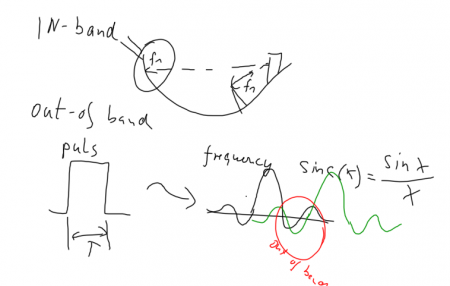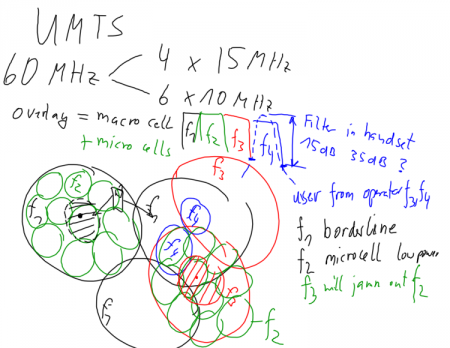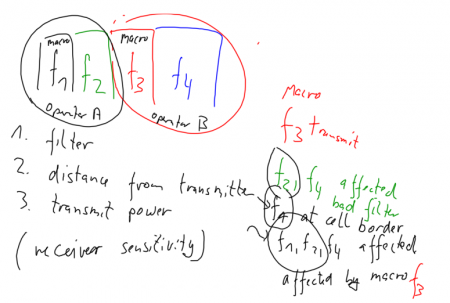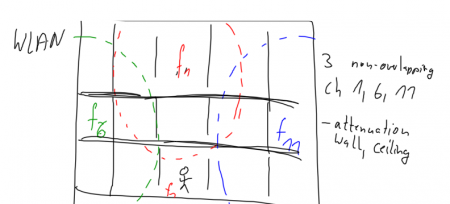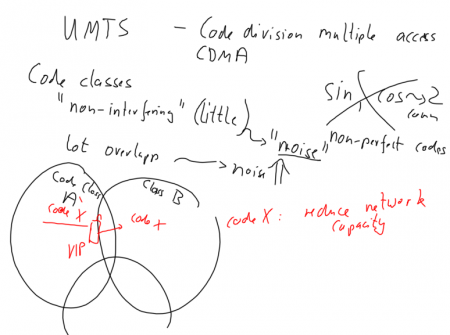Basics of Communication (A1-A3)
| Wiki for ITS | ||||||
|---|---|---|---|---|---|---|
|
Basics of Communication (A1-A3)
| Course | UNIK4700, UNIK9700 |
|---|---|
| Title | Basics of Communication and Assignments |
| Lecture date | 2017/09/05 1300-1600 h |
| presented | by Josef Noll |
| Objective | The objective of this lecture is to explain the principles of radio communication |
| Learning outcomes | What will we learn today
|
| Pensum (read before) | Read before:
|
| References (further info) | References:
A Practical Evaluation of Radio Signal Strength: Propagation characteristics of wireless channels: |
| Keywords | SNR, Transmit Power, Scattering, Reflection, Diffraction |
this page was created by Special:FormEdit/Lecture, and can be edited by Special:FormEdit/Lecture/Basics of Communication (A1-A3).
Test yourself, answer these questions
- What factors affect Wireless signal strength?
- Explain the meaning of the term diffraction
- How is diffraction used for radio communications?
- What is the difference between diffraction and interference?
- What is the difference between Scattering and Diffraction?
- What is non line of sight (NLOS)?
- Does WiMAX possess NLOS capability?
- How is UMTS different from current second generation networks?
Lecture notes
Regarding Video recording of UNIK4700/9700: Just talked to Kaja: Unfortunately we have a mapping problem with the disks, DRIFT is working to fix that issues. Hope you'll get the video links within this week.
Regarding the assignments: Next week, 12Sep2017, we'll set up the dates for presentation.
- 2017: Media:UNIK4700h17-Basics_of_Communication.pdf
- 2016: Media:UNIK4700h16-Basics_of_Communication.pdf
- 2015: Media:UNIK4700h15-Basics_of_Communication.pdf
- 2014: Media:UNIK4700h14-Basics_of_Communications.pdf
- Video: mms://lux.unik.no/UNIK4700-JN/UNIK-20140905.wmv
- Assignments: UNIK4700:Assignments
- 2013: Media:UNIK4700-L2H13.pdf
earlier notes
To Do
Towards next lecture:
- Prepare your presentations: UNIK4700:Assignments
- Select papers related to your topics
- Come with a suggestion on the direction of your presentation
- Josef to define a time schedule
- No assignment, talk to Josef!
Test yourself, answer these questions
- What factors affect Wireless signal strength?
- Explain the meaning of the term diffraction
- How is diffraction used for radio communications?
- What is the difference between diffraction and interference?
- What is the difference between Scattering and Diffraction?
- What is non line of sight (NLOS)?
- Does WiMAX possess NLOS capability?
- How is UMTS different from current second generation networks?
- Title
- UNIK4700/UNIK9700 Basics of Propagation
- Author
- Josef Noll,
- Footer
- Basics of Communication (A1-A3)
- Subfooter
- UNIK4700/UNIK9700
⌘ UNIK4700 Radio and Mobility
Lecture 2: Basics of communications
⌘ Principles of radio communication
- radio wave propagation
- Electromagnetic signals
- Nyquist Theorem
- Signal/noise ratio
- Shannon Theorem
- Signal strength
⌘TOC on A1-Electromagnetic signals
⌘ Wave Propagation Parameters
Can also be called "Propagation constant". Somewhat misleading, as the propagation usually varies strongly.
Alternative names:
- Transmission parameters
- Propagation parameters
- Propagation coefficients
- Transmission constants
- Secondary coefficients
Propagation constant, symbol γ, is defined by the ratio between the amplitude at the source, and the amplitude at some distance x. Is a complex quantity, so we use α (attenuation constant) and β (phase constant) to define it. Attenuation constant, is the loss of signal, or attenuation of an electromagnetic wave travelling through a medium. Phase constant is the change in phase per meter, along the path travelled.
⌘Wave propagation and absorption mechanisms
| Band | Frequency | Wavelength | Propagation via |
| Very low frequency, VLF | 3-30 kHz | 100 - 10 km | Guided between the earth and the ionosphere. |
| Low frequency, LF | 30 - 300 kHz | 10 - 1 km | Guided between the earth and the D layer of the ionosphere. Surface waves. |
| Medium frequency, MF | 300 - 3000 kHz | 1000 - 100 m | Surface waves.E, F layer ionospheric refraction at night, when D layer absorption weakens. |
| High frequency, HF (short wave) | 3-30 MHz | 100-10 m | E layer ionospheric refraction. F1, F2 layer ionospheric refraction. |
| Very high frequency, VHF | 30-300 MHz | 10-1 m | Sporadic E propagation Extremely rare F1,F2 layer ionospheric refraction during high sunspot activity up to 80 MHz. Generally direct wave. |
| Ultra high frequency, UHF | 300-3000 MHz | 100-10 cm | Line-of-sight propagation. Sometimes tropospheric ducting. |
| Super high frequency, SHF | 3-30 GHz | 10-1 cm | Direct wave. |
| Extremely high frequency, EHF | 30-300 GHz | 10-1 mm | Direct wave limited by absorption. |
The frequencies which we use for mobile communications are ranging from 450 MHz (ICE), the old TV bands, 800-900 MHz (GSM), 1800 (GSM), 1900, 2100 MHz (UMTS), 2400 MHz (Wifi), 2650 MHz (LTE), and 5100 MHz (IEEE802.11a..). While previously frequency band were used for a specific technology, refarming started in 2012 to open for communication technologies in other bands. Examples of such refarming are LTE1800 indicating an operation of LTE in the 1800 band. Back in 2013 Apple surprised the European operators, as the iPhone came with LTE only in the 1800 band, and not, as usual in Europe, in the 2600 band.
(Source:http://en.wikipedia.org/wiki/Radio_propagation)
⌘ Further readings
- see Wave Propagation Parameters (by Joachim Tingvold)
⌘ What will we learn today
- basics of radio communication
- sampling theorem
- typical radio transmission
- what effects the signal strengths
⌘ Heinrich Hertz - Radiowave propagation
Basics of wave propagation:
|
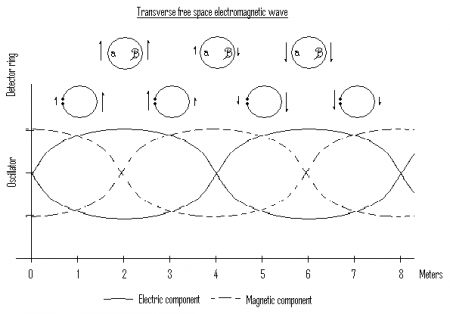
|
⌘ Electromagnetic signals
* Prerequisite: Ohm's law, current, dielectric constant
[Source: Wikipedia] Note: Depending on the convention, either |
Literature:
- Andersen, J.B., "Propagation measurements and models for wireless communications channels"
- Simon Saunders, Alejandro Aragón-Zavala, "Antennas and propagation for wireless communication systems"
- Seybold, J. S., "Introduction to RF Propagation"
- Andreas F. Molisch, "Wireless Communications"
- Andrea Goldsmith, "Wireless Communications"
- Shigekazu Shibuya, "A basic atlas of radio-wave propagation"
Keywords used:
- wireless electromagnetic propagation
- wireless electromagnetic propagation parameter
- wireless electromagnetic propagation fading
- wireless propagation refraction
- wireless wave attenuation constant
⌘ Coding and Modulation
A modulated radio signal can be written in a general form:
Any of these three parameters can be varied: amplitude-, frequency- or phase-modulation.
- Channel-coding is used to reduce bit-error-rate, e.g. through forward error correction.
- Multiplexing is used to split the total amount of radio into smaller pieces. Typical: time, frequency or code multiplex. examples
[Source:K.E. Walter, Basics of Mobile Communications]
Comments
Figure: A frequency band consists of n channels.
Example GSM: the upload band is from 880-915 Unik/MHz, which is 35 Unik/MHz. With a carrier of 200 kHz we have 175 channels, which have to be divided between the various operators.
⌘ Modulation types
- Amplitude shift keying (ASK)
- Frequency shift keying (FSK)
- Phase shift keying (PSK)
[Source:K.E. Walter, Basics of Mobile Communications]
⌘ Frequency and time division multiplexing
- Time domain, e.g. 8 slots in GSM
- Frequency domain, e.g. up- and downlink in specific bands
- Code division (CDM), specific codes
[Source:K.E. Walter, Basics of Mobile Communications]
⌘ Code division multiple access
UMTS as an example (in one of the future lectures)
⌘ A3-Digital Communication Principles
⌘ Chapter A3 - Digital Communication Principles
- radio wave propagation
- Electromagnetic signals
- Nyquist Theorem
- Signal/noise ratio
A4-Signal Strength and Capacity
- Shannon Theorem
- Signal strength
⌘ Nyquist Theorem
- Shannon: If a function
contains no frequencies higher than
[cycles/s], it is completely determinded by giving its ordinates at serires of points spaced
seconds apart
- band-limitation versus time-limitation
- Fourier transform
[source: Shannon, 1948]
⌘ Hartley's law
- The amount of information that may be transmitted over a system is proportional to the bandwidth of that system.
- where m is the “number of current values”, which in modern terms would be called “the size of the signalling alphabet”
Why did it take twenty years to fill the gap between Hartley’s law and Shannon’s formula? The only necessary step was to substitute 1+C/N for m in Hartley's law. Why, all of a sudden, did three or more people independently “see the light” almost at the same time? Why did neither Nyquist, nor Hartley or Küpfmüller realize that noise, or more precisely the signal-to-noise ratio play as significant a role for the information transfer capacity of a system as does the bandwidth?
[source: L. Lundheim, Telektronikk 2002]
⌘ Electromagnetic channel
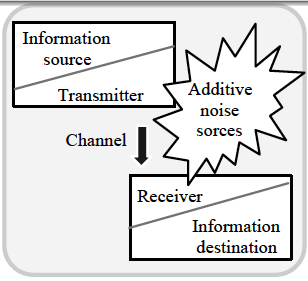
|
The radio channel is always affected by noise, which restricts the information flow to the receiver
[Source:Neelakanta et. al., Fig1.2] |
⌘ Sources of noise
* Electronic parts of transmitter and receiver (components)
|
Radio
- In-band interference
- out-of band interference, e.g. GSM/NMT interference
- radio channel, e.g. scattering, multi-path
[Source:Wikipedia, "interference"]
- further explanations: Telektronikk 4/95, Rækken and Løvnes, Multipath propagation
⌘ Signal/noise ratio
,
where P is average power
- why talking about noise?
- dB,
- near-far problem
[source: Wikipedia]
Comments
- in-band: a source having the same signal
- out-of-band: modulations/filters which are not perfect
explain Fourier-transform and overlap
The capacity of a system consists of both the cell capacity (depending mainly on OSI layer 1-3) and on network design, meaning: how much interference do I get from other cells.
In a network where the available 60 MHz in the UMTS band are distributed to 6 operators, each operator will only have 2x 10 MHz available for operation, which typically means that one frequency block (5MHz) will be used for micro-cells and the other frequency block (5 Unik/MHz) will be used for macro-cells.
The amount of interference will depend on
- the filter characteristics of the handset ( check separation)
- the distance from the transmitter
- the transmit power
Receiver sensitivity might play a role, but is considered as being constant in the selected frequency band.
802.11b has only three non-overlapping channels, ch 1, 6, and 11. In a normal business building radio waves will propagate not only along one floor, but also through the roof/floor. The visibility of WLAN will make it necessary to plan the frequencies in order to support the person on the ground floor with wireless access.
In UMTS coverage and capacity can be adopted not only through the power level of the transmitting unit, but also through the selection of codes. If the same code or code-class is selected in neighbouring cells, a simultaneous connection to the mobile phone can be achieved. This will increase the coverage (why?) but decrease the total capacity of the system (why?)
⌘ Shannon Theorem
Shannon's theorem will be part of next lecture...
⌘ Summary
- radio wave propagation explain
- Electromagnetic signals
- Nyquist Theorem
- Signal/noise ratio
